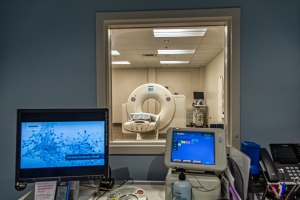Texans are no strangers to many things: football, southern hospitality, and intense heat! Summers in Texas can be fierce, prompting even the most seasoned citizens to seek shade from the blazing temperatures. Recent reports show that Texas summers are getting hotter and lasting longer, with some cities experiencing average temperatures in the 80s and 90s for weeks at a time. As outdoor activities become more common, it’s essential to understand how quickly heat-related issues can occur without proper preparation. Anyone planning on spending time outside during these Texas summers should know the difference between heat exhaustion and heat stroke, as the former can quickly escalate into a life-threatening emergency. Fortunately, Surepoint Emergency Center is fully equipped to handle any heat-related emergencies with expert care and urgency.
What is Heat Exhaustion?
In many cases, heat exhaustion is the precursor to heat stroke. It occurs when the body overheats due to prolonged exposure to high temperatures and dehydration, usually associated with high humidity and strenuous physical activity. Common symptoms of heat exhaustion include:
- Dizziness
- Fatigue
- Heavy sweating
- Goosebumps
- Weak or rapid pulse
- Muscle cramps (also known as “heat cramps”)
- Nausea/Vomiting
- Headaches
- Weakness, feeling faint, or near passing out
If you suspect that you or a loved one is experiencing heat exhaustion, stop all activity immediately and move to a cooler location to hydrate and rest. In addition to hot weather or strenuous physical activity, other causes of heat exhaustion include dehydration, alcohol use, or wearing excessive clothing in high temperatures.
What is Heat Stroke?
Unlike heat exhaustion, heat stroke is a life-threatening condition that occurs when your body becomes so overwhelmed by extreme heat that it loses its ability to regulate and manage its internal temperature. Heat stroke is the most severe form of hyperthermia, a medical term used when the body’s core temperature rises above 104 degrees Fahrenheit (40 degrees Celsius). Common symptoms of heat stroke include:
- Blurred Vision
- Delirium
- Fast, shallow breathing (tachypnea)
- Low blood pressure (hypotension)
- Passing out
- Pale or flushed skin
- Dry (classic heat stroke) or sweaty (exertional heat stroke) skin
- Seizures
- Altered mental status/confusion
- High internal core body temperature (generally over 104 degrees Fahrenheit (40 degrees Celsius)
What are the Causes? How Can I Tell the Difference?
Both heat exhaustion and heat stroke involve physical symptoms that can cause discomfort; however, heat stroke (unlike milder forms of heat illnesses) can directly affect brain functioning, leading to confusion, disorientation, or behavioral changes. Under normal circumstances, your body can get rid of excess heat through bodily adaptations like sweating, which helps restore the body to its normal internal temperature. Some causes and risks of heat-related illnesses include:
- Jobs and Activities: Individuals who work outdoors with potential exposure to intense heat, especially those not used to performing physical activity in those conditions.
- Age and Health Conditions: Individuals who are pregnant, over the age of 65, dehydrated, or have cardiovascular disease are most susceptible to heat-related illnesses. Babies and children are also at risk.
- Social and Environmental Factors: Warm climates with no temperature regulation or enduring strenuous exercise in intense heat with no cool down.
- Medications and Substances: Certain medications and substances can potentially interfere with the body’s ability to cool down (ex: amphetamines, beta blockers, alcohol, etc.)
If you or a loved one notices any symptoms, don’t hesitate. You must act fast and take preventative measures when necessary. This means staying hydrated, taking frequent breaks when outdoors, and NEVER ignoring early warning signs. If a heat-related illness turns into an emergency, you can always count on Surepoint Emergency Center to be local, accessible, and always ready to provide expert care.
Surepoint Emergency Center is a modern emergency medical facility open 24/7. As an alternative to the traditional hospital ER experience, we offer convenience and minimal wait time, along with highly-trained emergency medical staff and state-of-the-art equipment.
Our top priority is bringing high-quality emergency care, quickly and easily to your family. We are committed to making patients feel better faster in a comforting and compassionate environment.
Expert convenient care in your neighborhood.



References:
Cleveland Clinic. (2025a, June 2). Heat stroke. https://my.clevelandclinic.org/health/diseases/21812-heatstroke
Cleveland Clinic. (2025b, June 2). Heat-Related Illness (Hyperthermia). https://my.clevelandclinic.org/health/diseases/22111-hyperthermia
Mayo Clinic. (2023, April 6). Heat exhaustion – Symptoms and causes. https://www.mayoclinic.org/diseases-conditions/heat-exhaustion/symptoms-causes/syc-20373250
Vandergriff, C. (2024, August 25). New report finds summers are getting hotter and longer in Texas. CBS News. https://www.cbsnews.com/texas/news/new-report-finds-summers-are-getting-hotter-and-longer-in-texas/



